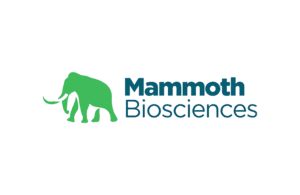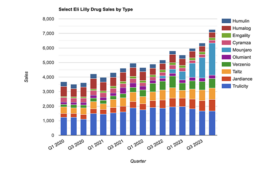 CRISPR-startup Mammoth Biosciences will file for an emergency use application from the FDA after publishing a study in Nature Biotechnology that suggests its platform can detect SARS-CoV-2 from a respiratory swab RNA extracts in less than 45 minutes.
CRISPR-startup Mammoth Biosciences will file for an emergency use application from the FDA after publishing a study in Nature Biotechnology that suggests its platform can detect SARS-CoV-2 from a respiratory swab RNA extracts in less than 45 minutes.
The company says the paper contains the first peer-reviewed data using CRISPR diagnostics for COVID-19.
In a release, Mammoth says its CRISPR tech offers faster, lower-cost alternatives to traditional quantitative polymerase chain reaction (qRT-PCR) tests. Those tests requires access to a specialized laboratory, typically requiring a 24-hour-plus turnaround, according to the company.
“We need faster, more accessible and scalable diagnostics,” said Janice Chen, chief technology officer of Mammoth, in a release. “The point-of-care testing space is ripe for disruption and CRISPR diagnostics have the potential to bring reliable testing to the most vulnerable environments.”
Chen said CRISPR can be programmed to detect any DNA or RNA sequence. The company reconfigured its DETECTR platform to detect the virus. The company collaborated Charles Chiu, MD, researchers from the Department of Laboratory Medicine at the University of California, San Francisco (UCSF), Dr. James Broughton, the research lead of the study.
The researchers validated the method using contrived reference samples and clinical samples from US patients, including 36 patients with COVID-19 infection and 42 patients with other viral respiratory infections.
Filed Under: Drug Discovery, Genomics/Proteomics, Infectious Disease





I think it is great. What are you guys waiting for? Go for the RNA Genome of the Virus. Use restriction endonuclease from the bacteria. Grow a bacteria in dish and introduce the Coronavirus in the Petri Dishes with bacteria. Or just introduce foreign ssRNA into a Petri Dishe with bacteria and see the bacteria can cut the ssRNA Genome of the Coronavirus. If the bacteria cuts the RNA GENOME of the Coronavirus the next step is to extract the enzyme from the bacteria and test the enzyme in the infected Human alveoli cell culture and see if you can repeat the same process of cutting the ssRNA Genome of the Coronavirus. If it does then we can start celebrating because you have find a way to kill the Virus. The challenging part is to find a bacteria that has the correct restriction endonuclease enzyme to cut.
Thanks
Phumlani Mkhize